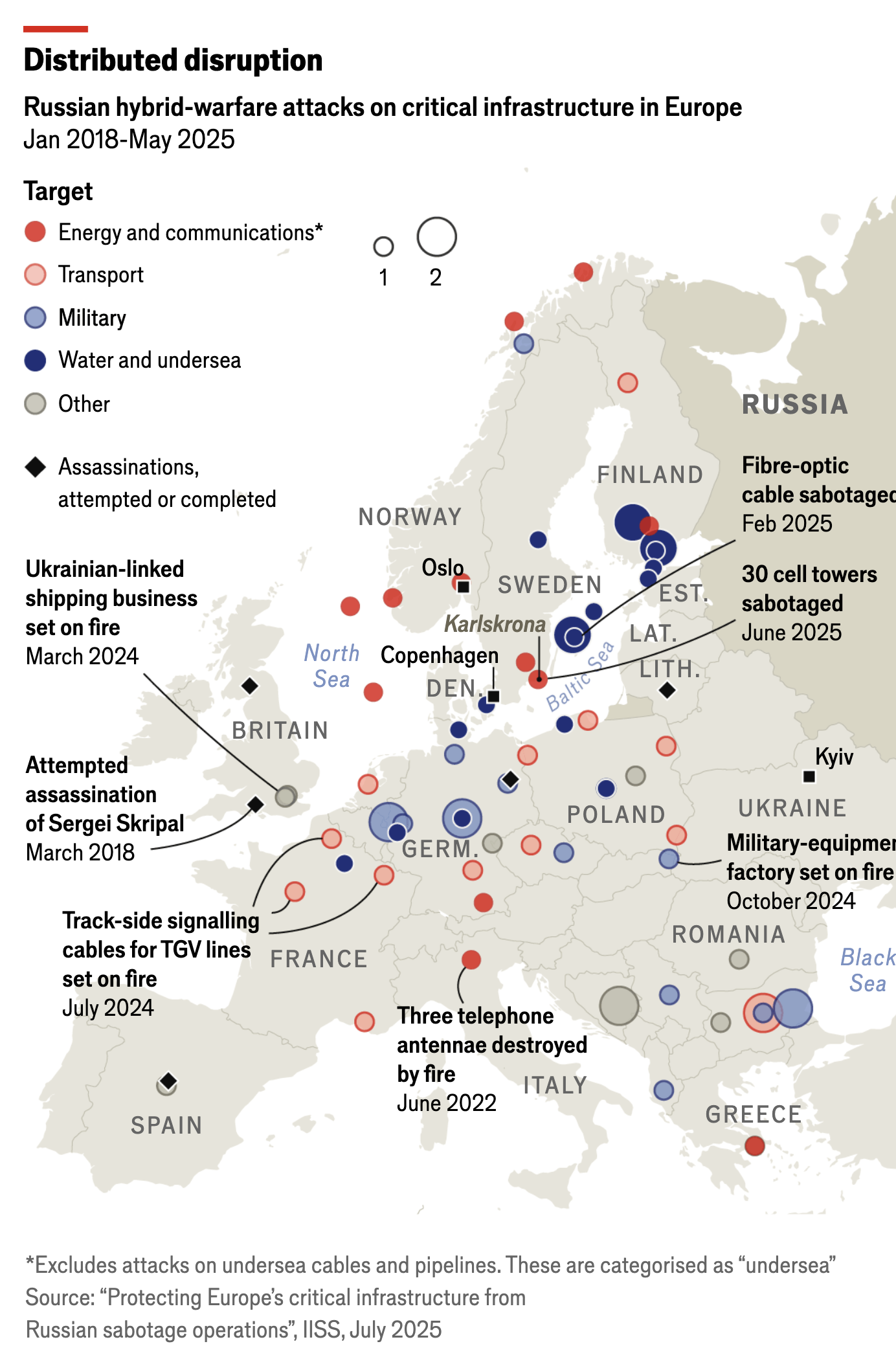Map of Russian Hybrid-Warfare Attacks on European Infrastructure


Alex Cartwright
Senior Cartographer & GIS Specialist
Alex Cartwright is a renowned cartographer and geographic information systems specialist with over 15 years of experience in spatial analysis and data...
Geographic Analysis
What This Map Shows
The map titled "Russian Hybrid-Warfare Attacks on Critical Infrastructure in Europe (2018-2025)" provides a comprehensive visual representation of the various hybrid warfare tactics employed by Russia against key infrastructural elements across Europe. This visualization highlights the locations and types of attacks, ranging from cyber intrusions to physical sabotage, showcasing the spread and intensity of Russian aggression over the years. Understanding this map is crucial for grasping the geopolitical landscape in Europe and the ongoing threats to national security.
Deep Dive into Hybrid Warfare
Hybrid warfare is a multifaceted strategy that combines conventional military power with irregular tactics, cyber operations, and propaganda. This approach aims to destabilize adversaries without engaging in full-scale warfare. The attacks depicted on the map illustrate how hybrid warfare can manifest in various forms, particularly through assaults on critical infrastructure such as power grids, transportation networks, and communication systems.
One of the most significant aspects of hybrid warfare is its ability to create uncertainty. By targeting critical infrastructure, attackers can disrupt daily life and instill fear among the population, all while remaining ambiguous about the source of the threat. For example, the cyberattack on Ukraine's power grid in December 2015, which resulted in widespread blackouts, serves as a prime illustration of how such operations can have severe consequences.
Interestingly, the map shows that the attacks are not limited to just one type of infrastructure. For instance, in addition to cyberattacks, there have been physical attacks on pipelines and railways, which are vital for energy supply and transportation. These incidents are not merely random acts of sabotage; they are calculated moves intended to weaken European nations' resilience and cohesion.
Furthermore, the data suggests a pattern where certain regions have experienced a higher frequency of attacks than others. For instance, Eastern European countries, particularly those bordering Russia, have been more heavily targeted. This is likely due to their geopolitical significance and the historical context of Russian influence in the area, which raises questions about how these nations can bolster their defenses against such tactics.
Regional Analysis
When examining the map closely, we find stark contrasts in the prevalence and type of hybrid warfare tactics employed across different European regions. For instance, the Baltic States, like Estonia and Latvia, have faced a disproportionate number of cyberattacks aimed at disrupting governmental functions and public services. This is likely a reflection of their strategic location and their historical experiences with Russian aggression.
In Southern Europe, countries such as Greece and Italy have encountered physical sabotage aimed at disrupting energy supplies, particularly in relation to natural gas pipelines. The map shows multiple incidents in these regions, indicating a targeted effort to weaken the energy independence of these nations.
Conversely, Western European countries, while generally less targeted than their Eastern counterparts, have not been entirely immune. The map indicates that nations such as Germany and France have experienced a mix of cyber and propaganda attacks, which aim to influence public opinion and electoral processes. What's fascinating is how these attacks are often less visible yet can have profound implications for democratic processes and societal cohesion.
Significance and Impact
Understanding the implications of hybrid warfare is vital, especially as we navigate an increasingly complex global landscape. The attacks shown on the map are not just isolated incidents; they reflect a broader strategy aimed at undermining the stability of European nations. The significance of this lies in its potential to alter the balance of power within the region, as nations must grapple with both the immediate effects of these attacks and the long-term implications for their national security strategies.
Moreover, the rise of hybrid warfare poses a challenge for how countries prepare for conflicts that are not traditional in nature. As military and intelligence agencies adapt to these threats, there is an urgent need for collaboration among European nations. The map serves as a stark reminder of the vulnerabilities that exist and the necessity for unified responses to safeguard critical infrastructure.
In summary, the visualization of Russian hybrid-warfare attacks on critical infrastructure in Europe from 2018 to 2025 encapsulates a significant aspect of modern geopolitical conflict. As Europe continues to face these challenges, understanding the nature of hybrid warfare will be crucial for developing effective strategies to defend against future threats.
Visualization Details
- Published
- October 2, 2025
- Views
- 36
Comments
Loading comments...